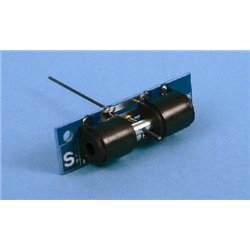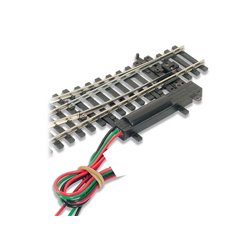Generally, plastic model plane kits do not come with plinths supplied. Nowadays, the majority of kits are designed to...
No products
Product successfully added to your shopping cart
There are 0 items in your cart. There is 1 item in your cart.
Search Tips
Christmas and New Year
We are dispatching orders every weekday apart from Christmas Day, Boxing Day and New Year's Day.
If you order is time critical, select next day delivery at checkout.
The shop in Sandown is closed from 25th December, reopening on 30th December.
What are solenoid point motors?
Solenoid point motors are used for throwing the points on your layout. They can also be used for other animations such as semaphore signals.
The point motor uses two solenoids to pull a metal rod towards them, when this is connected to the tie bar on the points the points can be changed.
They usually require 3 wires: one common to both solenoids and one for each side for the motor. When power is applied to the common and one side, this completes the circuit and activates one solenoid which in effect becomes a magnet moving the rod.
They are available for under your base board, ideal for areas of your layout where you don't want to see a point motor shed, or ruin the landscape, or surface mounted when you can't quite squeeze one in underneath or a motor shed won't look out of place.
There is a wide variety of point motors available in many shapes and sizes, if you are unsure of the right one for you, maybe take a picture of the area where the motor needs to go if you can, best to take a picture of above and below if possible, and then ask in your local model shop.
Click here to receive the tips weekly in your mailbox. You can unsubscribe at any time.










